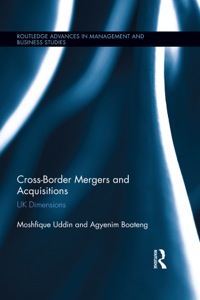ustomer Profitability Analysis Rogers Aeronautics, LTD, is a British aeronautics subcontract company that designs and manufactures electronic control systems for commercial airlines. The vast majority of all commercial aircraft are manufactured by Boeing in the U.S. and Airbus in Europe; however, there is a relatively small group of companies that manufacture narrow-body commercial jets. Assume for this exercise that Rogers does contract work for the two major manufacturers plus three companies in the second tier. Because competition is intense in the industry, Rogers has always operated on a fairly thin 20% gross profit margin; hence, it is crucial that it manage non-manufacturing overhead costs effectively in order to achieve an acceptable net profit margin. With declining profit margins in recent years, Rogers Aeronautics' CEO, Len Rogers, has become concerned that the cost of obtaining contracts and maintaining relations with its five major customers may be getting out of hand. You have been hired to conduct a customer profitability analysis. Rogers Aeronautics' non-manufacturing overhead consists of $2.5 million of general and administrative (G&A) expense, (including, among other expenses, the CEO's salary and bonus and the cost of operating the company's corporate jet) and selling and customer support expenses of $3 million (including 5% sales commissions and $1,050,000 of additional costs). The accounting staff determined that the $1,050,000 of additional selling and customer support expenses related to the following four activity cost pools: Cost per Unit Activity Activity Cost Driver of Activity 1. Sales visits Number of visit days $800 2. Product adjustments Number of adjustments 1,300 Number of calls/contacts 3. Phone and email contacts 50 4. Promotion and entertainment events Number of events 2,000 Financial and activity data on the five customers follows (Sales and Gross Profit data in millions): Quantity of Sales.and Support Activity Customer Sales Gross Profit Activity 1 Activity 2 Activity 3 Activity 4 $17.00 #1 $3.40 106 23 220 82 #2 12.00 2.40 130 36 354 66 #3 3,00 0.60 52 10 180 74 #4 4.00 0.80 34 138 18 #5 3.00 0.60 16 104 10 Other be BusinessCourse Return to course My Subscriptions Jackeline pools. Cost per Unit Activity Activity Cost Driver of Activity 1, Sales visits Number of visit days $800 2. Product adjustments Number of adjustments 1,300 3. Phone and email contacts Number of calls/contacts 50 4. Promotion and entertainment events Number of events 2,000 Financial and activity data on the five customers follows (Sales and Gross Profit data in millions): Quantity of Sales and Support Activity Gross Profit Activity 1 Activity 2 Activity 3 Activity 4 Customer Sales #1 $17.00 $3.40 106 23 220 82 # 2 12.00 2.40 130 36 354 66 #3 3.00 0.60 52 10 180 74 #4 4.00 0.80 34 6 138 18 #5 3.00 0.60 16 5 104 10 $39.00 $7.80 338 80 996 250 In addition to the above, the sales staff used the corporate jet at a cost of $800 per hour for trips to customers as follows: Customer #1 24 hours Customer # 2 | 36 hours Customer #3 5 hours 0 hours Customer #4 Customer #5 6 hours The total cost of operating the airplane is included in general and administrative expense; none is included in selling and customer support costs. a. Prepare a customer profitability analysis for Rogers Aeronautics that shows the gross profits less all expenses that can reasonably be assigned to the five customers. Enter figures as complete numbers (with all zeros). For example, 1 million is 1,000,000. Do not use negative signs with any answers. Round return on sales to one decimal place. (Ex: 10.4%) Customer # 1 Customer #2 Customer #3 Customer #4 Customer #5 Course Return to course My Subscriptions Jackeline Flores Enter figures as complete numbers (with all zeros). For example, 1 million is 1,000,000. Do not use negative signs with any answers. Round return on sales to one decimal place. (Ex: 10.4 % ) Customer #1 Customer #2 Customer #3 Customer #4 Customer #5 Sales 0 Cost of goods sold 0 0 0 Gross profit 0 0 0 0 0 Less expenses Sales commissions 0 Sales visits 0 Product adjustments 0 0 0 Phone and other remote contacts 0 0 0 0 0 Promotion and entertainment 0 0 0 0 Corporate jet expense 0 0 0 Customer profitability 0 $ 0 $ 0 $ 0 Customer return on sales 0% 0% 0% 0% 0% b. Now assuming that the remaining general and administrative costs are assigned to the five customers based on relative sales dollars, calculate net profit for each customer. Enter figures as complete numbers (with all zeros). For example, 1 million is 1,000,000. Do not use negative signs with any answers. Do not round during calculation G&A expenses. Round final G&A expenses to the nearest whole number. Round return on sales to one decimal place. (Ex: 10.4 %) Customer #1 Customer # 2 Customer #3 Customer # 4 Customer #5 0 $ 0 $ 0 0 $ Customer profitability 0 0 0 0 Less G & A expense 0 0 0 Net customer profitability 0% 0% 0% 0% 0% Net customer return on sales Check









